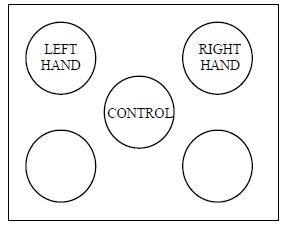Gunshot residue, which includes primer, powder, and projectile materials and their combustion products, results from firearm discharge. The residue is usually deposited on the hands of a shooter and results from gases or particles escaping from openings in the weapon (like the cylinder area of a revolver) or the end of the barrel. How much residue is present on the hands depends on the type of weapon, ammunition, and discharge conditions.
Gunshot Residue Analysis
Gunshot residue analysis from the hands of the shooter mainly detects trace amounts of primer residue.
The amount of gunshot residue (GSR) deposits decrease rapidly in the first hour after firing the weapon, and generally, no residue can be expected after six hours from a living person. However, in the case of suicides, GSR can last for several hours after the time of shooting. In all cases, it is critical to collect the sample correctly. GSR sample from a live subject should be collected as soon as possible after the shooting, ideally immediately after encountering the subject in the field. A single collection kit for scanning electron microscopy (SEM) adhesive disc type sampling collection method should be used.
Caution
The subject should not be allowed to wash or rub their hands before taking a sample, and should not be fingerprinted before sampling. Before obtaining a sample, the subject’s hands and wrists should be examined visually and any visible residue deposits (black smudges) or particles should be photographed or sketched. However, care should be taken not to touch the subject’s hands as that may contaminate them. If possible, the subject’s hands should not be cuffed behind the back, as that may remove any GSR from the back of the hands.
The person sampling should wash their hands and wrist thoroughly if possible to prevent contaminating the subject’s hands. Disposable gloves must be worn before handling any sample materials.
The instructions should be followed carefully. The hand to be sampled should be supported by holding the arm above the wrist. The subject should relax and flex the hand during collection so that the adhesive can spread on the wrinkled areas around the knuckles and palms. The sticky surface should not be touched or peeled off. Gloves should not be used.
Product No. 16256-2 and 16256-3 Kit Contents:
- 2- Disposable, powder free nitrile gloves
- 2 or 3 - Evidentiary swabbing discs and labeled vials
- 1-3-3/4 X 3-1/2 X 2-5/8" box for evidentiary results
- 1-Tamperproof seal applied on the box to be torn prior to testing
- 1-Evidence label to be applied to box after evidentiary swabbing is complete
- 1-Instruction Sheet
Instructions for Collecting, Packaging and Submission of Gunshot Residue (GSR) from Persons Suspected of Discharging a Firearm using adhesive coated discs for SEM analysis.
- Hands should be washed thoroughly.
- The GSR kit is opened ensuring that the tamper evident seal is intact.
- Disposable gloves must be worn.
- The sample disc labeled RIGHT HAND is selected. The amber disc holder is removed from the vial. The disc should not be touched to anything else but the subject’s hands.
- To collect residue samples from the subject’s hand, the adhesive disc is pressed against the back and palm of the right hand systematically until the disc loses its stickiness. The disc should not be slid or rotated. The area on the back of the thumb, the web between the junction of the thumb and the back of the index finger, and down the back of the index finger extending to the tip of the finger, are the areas to concentrate on. The knuckles should be flexed to allow sampling there. The same procedure should be used for sampling the palms. The palm, the front of the thumb, web, and index finger are dabbed.

- After the adhesive surface has been used and the sampling from the hand is complete, the disc is resealed in the clear labeled vial provided.
- The same process is performed on the LEFT HAND disc.
- The remaining disc (only in 16256-3) is used as a CONTROL, so it should not be opened.
- The vials should be labeled with all the information required, e.g., subject’s name and officer’s identification and placed back in the box.
- It is then submitted to the local crime lab along with the required documentation such as a submission form and police report.


This information has been sourced, reviewed and adapted from materials provided by Ted Pella, Inc.
For more information on this source, please visit Ted Pella, Inc.